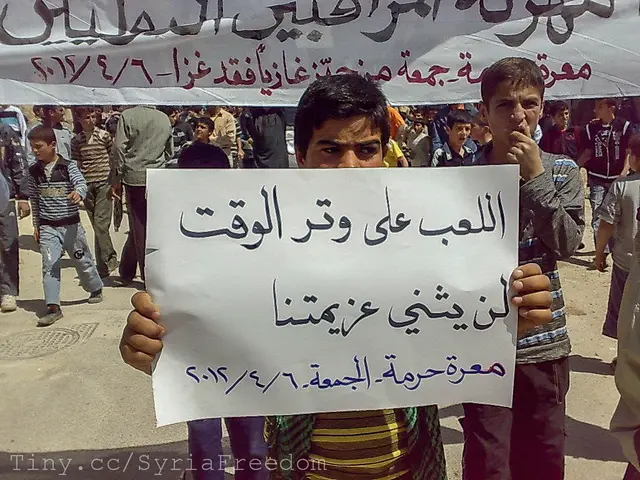Redefining the Political Landscape of Mineral Resources
The race for critical minerals, essential for the development of technology and energy, is heating up as nations scramble to secure their supplies.
One major player in this global competition is the Philippines, a leading producer of nickel, accounting for over 10 percent of global production. Cobalt, often a byproduct of nickel mining, is also abundant in the country.
Australia, too, holds extensive resources of lithium, rare earths, cobalt, and nickel, making it a key player in non-Chinese critical mineral supply.
The Minerals Security Partnership, a coalition of 14 nations and the European Commission, aims to undermine China's dominant position in the sector while fostering economic development in resource-rich African countries. European governments have begun increasing their support for African mining projects to diversify their global critical mineral supply sources.
The U.S.-Ukraine minerals agreement is a geostrategic maneuver with the aim of weakening China's minerals supply dominance and bolstering America's own technological and military supply chains. The U.S. also aims to secure long-term investments in minerals processing and refining through government support for downstream shipments of future Ukraine-origin minerals.
Chile possesses the world's largest lithium reserves and plans to nationalize its lithium industry to develop more sustainable extraction methods. Mexico has large lithium deposits, notably in Sonora, considered among the world's largest. Tanzania has multiple mines under development for battery markets, with its Ngualla deposit containing high-grade rare earth elements.
Turkey boasts significant chromite production and has discovered rare earth elements in central Anatolia. Significant deposits of chromium, vanadium, titanium, and cobalt also exist in Kazakhstan. Vietnam holds around 22 million metric tons of rare earth reserves and is developing a vertically integrated rare earth magnet supply chain. Brazil ranks among the top globally with approximately 21 million metric tons of rare earth reserves.
Russia possesses vast reserves of rare earths, particularly in the Murmansk and Khabarovsk regions. Afghanistan is speculated to have significant lithium deposits in Herat, Nimroz, and Ghazni provinces, while the Hajigak deposit in Bamyan Province is known for substantial niobium reserves.
India has launched a multi-pronged strategy to acquire and source critical minerals worldwide, including developing international partnerships and acquiring resources. The U.S. will push allied European nations and partners into increased defense spending, likely on American weapons technology.
Mongolia and Central Asia are richly endowed with critical and strategic minerals, though much of their potential remains underexplored. Madagascar possesses high-quality graphite, and its Ambatovy mine is one of the world's largest nickel and cobalt operations. DRC President Felix Tshisekedi recently offered the U.S. access to his nation's mineral resources in exchange for military assistance.
This global competition for critical minerals promises to reshape geopolitical landscapes, offering substantial economic opportunities for countries rich in these resources, and diversifying global supply chains. The race is on.
Read also:
- Peptide YY (PYY): Exploring its Role in Appetite Suppression, Intestinal Health, and Cognitive Links
- Toddler Health: Rotavirus Signs, Origins, and Potential Complications
- Digestive issues and heart discomfort: Root causes and associated health conditions
- House Infernos: Deadly Hazards Surpassing the Flames








